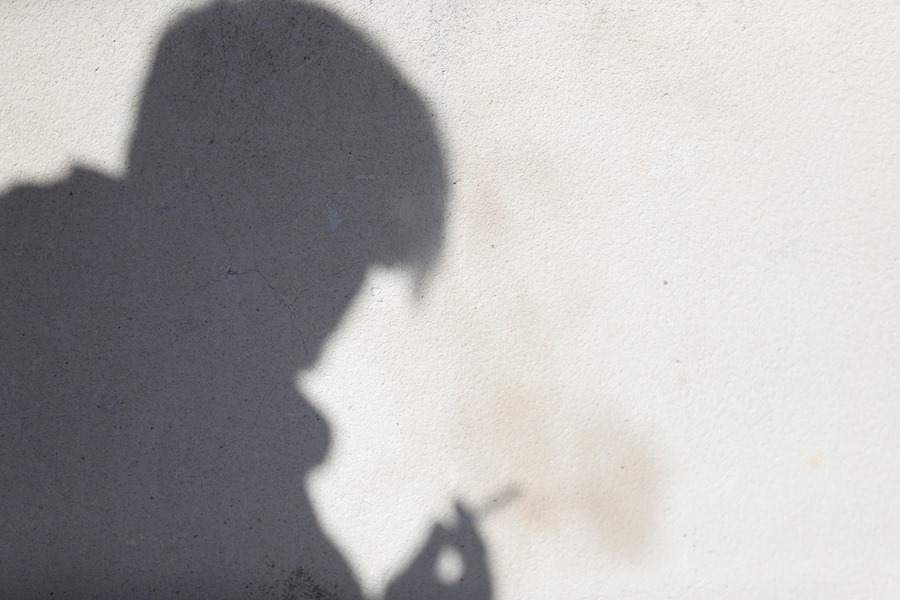Lung cancer drains the resources of 50% of patients

Adaya Gonzalez |
Madrid (EFE).- Hearing that you have lung cancer, the deadliest of tumors, causes an emotional “tsunami” that “takes everything”, including your resources: half of patients see their income reduced due to the disease, losses are around 20% in six out of ten cases, although they can exceed 30%.
“The economic mess is clearly great,” emphasizes Bernard Gaspard, president of the Spanish Association of Lung Cancer Patients (AEACaP), in an interview with EFE on the occasion of World Lung Cancer Day, which is celebrated every year on November 17.
There are patients who can afford things that the public system does not cover, such as travel, dermatological, nutritional or rehabilitation procedures, but others have to use consumer loans or help from relatives to afford it.
81% have difficulty accessing medical care
Bernard, who lost his wife to lung cancer, had to undergo psycho-oncology sessions to cope with his grief and the grief of his children. Each one costs between 80 and 90 euros, although their association provides them for 55 and pays for the first ten.
He also asked for leave to accompany his wife, who wanted to die at home, to accompany her in the last months of her life.
The eighth report on lung cancer in Europe, The Economic Impact of Lung Cancer in Spain, shows that half of patients lose income after diagnosis; six out of ten – 20% and one out of four – more than 30%. 14.3% find it difficult to live with what they have left.

The main reason is the recognition of retirement due to illness, followed by incapacity for work (28.3%).
As a result, 50.9% have to make adjustments to adapt to the new situation, such as changing plans (32.4%) or limiting leisure time (31.5%).
Another challenge for the 81.2% of patients experiencing financial hardship is being able to afford certain treatments and care. 57.6% have limited access to psychologists, physiotherapists or nutritionists.
It’s not “bad cancer”
“The first moment of diagnosis is like a tsunami, because suddenly everything on which your life is based, both professional, family and personal, disappears,” Mª Angeles Marin, Leles, tells EFE.
It was “devastating” for her husband and children. “It destroys everything, it takes away everything that came before it. “I turned my whole family’s life upside down,” he recalls.
He came to see her in November 2021 during a routine check-up for her asthma, which seemed to have gotten a little worse in recent months. When his pulmonologist opened the X-ray, “a large tumor was found in the upper part of his left lung. That’s where the show started.”
Impressive because Leles also does not smoke – 80% of patients smoke or have smoked – she is female – which has a lower incidence – and her father had pulmonary fibrosis, which was expected. “Cancer never even crossed my mind,” he insists.
And there was “lung adenocarcinoma with an EGFR mutation in exon 21,” in stage IV and with metastases to the adrenal vertebrae, two femoral heads and first to the brain, which disappeared after the first three months. treatment.
It took 20 minutes to digest. He knew little about the disease other than that “it is diagnosed very late and, unfortunately, people die within a few months.” “I thought I wouldn’t live to see Easter. My birthday is in February, and I was wondering if I would celebrate it,” he admits.
Her resources remained the same despite her being on sick leave because her husband continued to run the family business and her job was now being done by a close friend of her son who was hired while he was an intern.
He lives in Cadiz, close to the hospital, so he doesn’t spend money on travel, but he sees how other patients his association cares for are going through difficult financial situations.
Leles ends with a resounding message: “Cancer is not bad. To get lung cancer, all you need is lungs. Please let’s stop stigmatizing it because smokers don’t get cancer either.”
Screening is 10 times cheaper than immunotherapy

The more than 30,000 cases diagnosed each year, 70% of them in advanced stages, also leave their mark on the system: they account for 11% of total cancer treatment costs (2.1 billion per year), with an average cost per patient of 63,245 According to the Spanish Association against Cancer, in the first stages of the disease and more than 103,000 euros for metastases.
The reduction of this footprint necessarily implies an early diagnosis, emphasizes Luis Seijo, director of the pulmonology department of the University Hospital of Navarra.
Spain does not yet carry out screenings, which in principle are recommended for people over 50 who smoke 20 to 30 packs of cigarettes a year or more, although these are criteria that, according to the expert, “need to be improved.” ”
Seijo is one of the coordinators of Cassandra, a pilot project that has already been launched by 9 public centers in 4 communities, which aims to confirm the viability of these programs in Spanish healthcare.
The Lung Ambition Alliance, a global multi-organization collaborative initiative to eliminate lung cancer as a cause of death, estimates its cost-effectiveness at 2,500 per QALY (quality-adjusted life years), with colorectal cancer at 2,154 and breast cancer at 15,000.
“Immunotherapy costs at least 10 times more. But it is approved, and rightly so, for the treatment of late stages. The key is to decide as a society how much we are willing to pay to save a life. We are spending much more so that those suffering from this disease can live a few more months,” he wonders.
